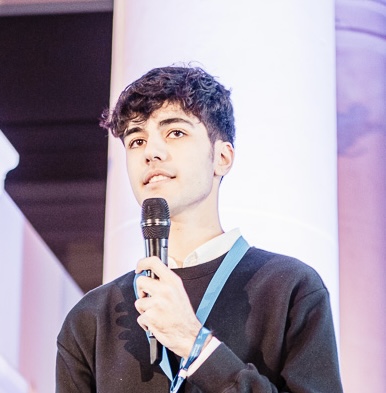
- Alexandru Jerlucha, a 17-year-old high school student in Bucharest (Romania), has created the first neural machine translation system for Romania. It is a minority Romanesque language spoken in the Balkans about 200,000 people. Its innovative tool, available via the page AroTranslate.com, allows you to translate the Romanian-Rumanian ruler, the English-Rumanian ruler and the English-Romanian language. The La Gain de las Tongues congress will be held in Donostia-San Sebastian on 26 November, which will discuss the presence of minority languages in the digital environment. Here's the website of the congress.

Her dedication to computational linguistics has attracted national attention in Romania, and the media have wanted to publicise her innovative work. In this interview, Alexandru tells us about the inspiration behind his project, the challenges he faces and the importance of his project for the preservation of the ruin.
Alexandru, could you tell us briefly what he invented exactly and what benefits he brings to the ruined language?
With the help of Sergiu Nisioi, a member of the University of Bucharest, and of the ruined community of Romania and other countries, especially with the help of Florentina Costa, we created the first neural system of automatic translation into ruin. The Eastern language is a romance. To carry out the project, we had to create a dataset with over 80,000 pairs of Romanian-Wrinkle phrases. We collected data from different sources, and we did it through a data collection process adapted to the wrinkle. This AI-based translation tool is intended to make the wrinkle more accessible. You will find more technical details of the project in our publication.
What did you base yourself on to develop the first machine translation system of the ruin?
I was inspired by computational linguistics studies and other endangered language machine translation projects, like Sami and Cheroki. The observation of the efforts made in other languages prompted me to create something similar for the ruin.
How important is it for you to help you in such a meaningful way to care for the wrinkle?
I am proud that this project has drawn attention to the conservation of the ruin. Internet articles and social media posts are helping to raise people's awareness. In the academic world, I hope that our corpus will promote more research on the digitization of the wrinkle. Even though our project is a breakthrough, it is a prototype that has borders and the Romanian still has to face many challenges. Even though this project in itself is not going to "save" the language, I hope it has taken a step in the right direction.
What difficulties have you had in developing this translation system?
The biggest challenge was data collection. Although our corpus (dataset) is the largest of this type, it is still relatively small compared to the languages with the highest level of resources, as they contain data sets of millions or billions of phrases. Our goal is to continue to expand and improve.
What reactions have you received from the wrinkle community in relation to your invention? How have the Romanian media reacted to this work?
The Arrumana community has been very active and has offered constructive comments on the programme errors, which have been very valuable. The main Romanian media made our project known, which aroused enthusiasm even among those who are not talking ruined. We received messages from people who were unaware of the state of the language, and we are glad to have contributed to raising awareness of the challenges of the wrinkle.
What tasks do you have for future projects related to language technology?
Next year, I'm going to start college. There I will continue studying Natural Language Processing and will collaborate in the realization of more projects for languages with fewer resources. When the university admission process is over, I will continue to develop the translation system for Romanian.